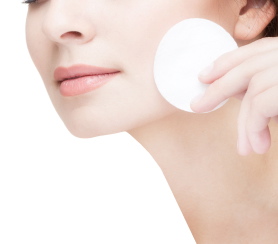Achieving skin balance is key to taking control of problem skin. Skin balance refers to an even pH and oil production, and is affected by products, diet, stress and lifestyle.
Unbalanced skin experiences oiliness, dryness, breakouts and reactions, whilst balanced skin is calm, clear and comfortable – here’s how to achieve it:
Give your skin a rest
For problem skin sufferers, the temptation is to use as many products as possible until you find one holy grail.
In reality, this chopping and changing throws the skin further and further out of balance – so the first thing to do is to strip your skincare back to a basic Cleanse, Tone and Moisturise routine until it rediscovers its natural rhythm.
Avoid detergents and alcohol
Detergents and alcohol cause havoc as they strip away the skin’s natural protective oils, leaving it exposed and prone to reaction.
The main detergents to look out for (and avoid) are Sodium Lauryl Sulphate and Cocamidopropyl Betaine, which tend to be found in foaming products and facial Cleansers.
Select pH balancing products
Despite the 5.5 myth, the pH level of the skin is actually only slightly above 5.
Maintaining this “acid mantle” is essential for all round skin health, so try and avoid products that disrupt it (soaps, for example are alkaline).
Avoid refined sugar
Everything in moderation, but do avoid excessive consumption of the refined sugars found in cakes, biscuits and bread.
Our bodies require extra insulin to break these sugars down; in turn, insulin causes excess sebum production, and more often than not excess sebum means spots.
Consider other factors
If you’re doing all of these things and your skin still doesn’t feel quite right, consider whether any of these balance disruptors may be the cause.
This could include the contraceptive pill, pregnancy, illness or medication, environmental factors such as weather.


